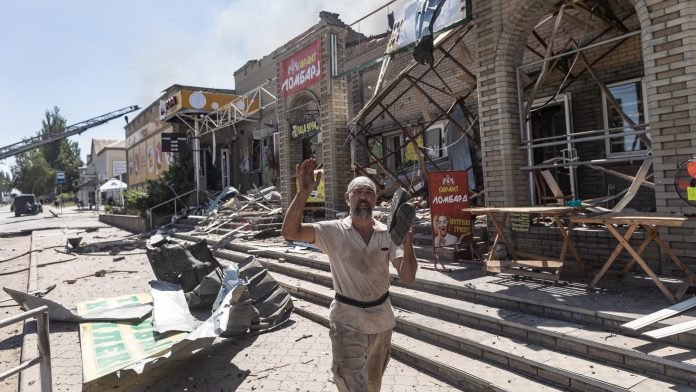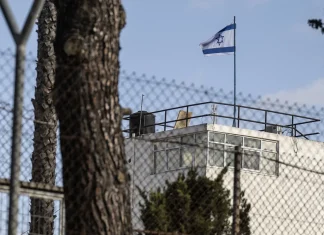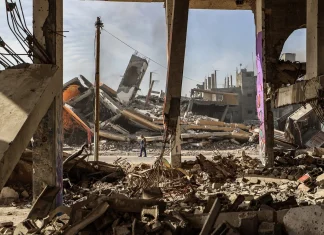
The Night the Drones Took Flight: A Cross-Border Clash of Iron and Fire
Under the cloak of darkness, a new kind of war unfolds—a battle not just of soldiers and tanks but of buzzing drones and silent explosions reverberating beyond borders.
Last night, amid the vast expanse between Ukraine and Russia, a symphony of controlled chaos played out with deadly precision.
Long-range drone strikes launched from Ukraine struck deep into southern Russia’s heartland, hitting military airfields and industrial sites, igniting fires, and leaving a trail of casualties and broken lives in their wake.
It’s a grim reminder that this conflict, now stretching over two torrid years, transcends the frontlines. It pulses in towns hundreds of kilometers from where the major ground battles rage, shaking the everyday reality of civilians far from the battlefield. But how did drones come to symbolize this new era of warfare — and what do these chilling strikes reveal about the evolving theater of conflict?
The Strike in Primorsko-Akhtarsk: Flames Among the Drones
Ukrainian intelligence, through its formidable Security Service (SBU), announced that last night’s operation targeted a military airfield in the southwestern town of Primorsko-Akhtarsk, a strategic hub where Russia stores Iranian-built Shahed drones. These drones have become infamous as Moscow’s ‘hungry hawks’ attacking Ukrainian cities with chilling persistence.
“The operation led to a major fire erupting among the stored drones,” an SBU spokesperson said, hinting at the scale of disruption inflicted on Russia’s unmanned aerial fleet. In moments like these, war is less about the soldiers on the ground and more about the silent machines hovering overhead — their destruction a blow to the enemy’s lethal repertoire.
But the assault did not stop there. Ukraine also aimed at Elektropribor in the Penza region, a company wrapped tightly into the web of Russia’s military-industrial complex. Known for crafting integral components — from digital networks to aviation devices, armored vehicles, even naval crafts — Elektropribor is more than a factory; it’s a keystone in Moscow’s war machine.
Voices from Penza: Loss and Shock
Oleg Melnichenko, governor of Penza region, broke the grim news on Telegram: “A woman has lost her life, and two others have been wounded in the strike.” The human toll, often swallowed up by headlines about drone counts and destroyed targets, feels raw here — a mother, a neighbor, a civilian caught in a web not of their making.
“There’s a palpable tension in the air,” says Marina, a shopkeeper in Penza. “You hear about distant battles, then suddenly the destruction lands on your doorstep like a nightmare you can’t escape.”
Lives Lost to Falling Debris: The Samara and Rostov Tragedies
In Samara, a quiet region not far from Penza, Vyacheslav Fedorishchev posted a sobering update: an elderly man perished when his home caught fire from drone debris. The imagery is haunting — a life extinguished not amid combat but in the sanctity of home, highlighting war’s cruel reach into mundane moments.
Similarly, the Rostov region mourns a security guard killed at an industrial facility during a drone attack. Acting governor Yuri Sliusar spoke with measured tone on Telegram: “Despite this, the military successfully repelled a massive air attack, destroying drones across seven districts.”
But in the background hums an urgent question: as drone technology proliferates, could anyone truly be safe? What fortress can withstand the invisible armies of the sky?
Drone Warfare: The New Frontline
Since the war’s escalation in February 2022, drones have emerged as the new frontline troops in this protracted struggle. Both Russia and Ukraine have invested heavily in unmanned aerial devices — not simply as surveillance tools, but as instruments of defiance and destruction.
An AFP report released recently revealed an astonishing figure: in July alone, Russian forces launched 6,297 drones over Ukrainian airspace. Many of these are decoys, designed to overwhelm Ukrainian air defenses, testing patience and resilience.
In the eastern Dnipropetrovsk region, last night’s Russian drone strikes wounded three civilians, damaging homes, vehicles, and public infrastructure. Local governor Sergiy Lysak lamented this civilian toll on Telegram, affirming the war’s persistent damage beyond soldier casualties.
Clashes Over Territory: Fact and Fiction
Moscow claims gains in Dnipropetrovsk, including the capture of two villages—a narrative contested and denied vehemently by Kyiv. Such misinformation and propaganda swirl around these contested regions, complicating the world’s understanding of progress and loss.
Leaders at Odds: Echoes of a War Without End
Russian President Vladimir Putin remains unequivocal — peace talks, yes, but only on Moscow’s terms. His conditions—a Ukrainian withdrawal from captured territories and a renunciation of NATO ambitions—remain non-negotiable.
Meanwhile, Ukrainian President Volodymyr Zelensky holds onto a sliver of hope. “Only one person can end this war,” he stated recently, calling again for talks with Putin and pointing to diplomatic overtures from the United States.
“The door is open,” Zelensky wrote on his X account. “What’s missing is Russia’s willingness to step through it.”
More Than a Local Conflict: What This Means Globally
The drone wars waged between Ukraine and Russia are far from isolated skirmishes. They symbolize a broader transformation in conflict worldwide — how technology is shifting the power dynamics, making distant violence more immediate and civilian casualties more unpredictable.
As these shadow battles increase, we must wonder: What does the future look like in a world where a war is waged not just with guns and tanks, but with buzzing drones silently dropping fire and fear?
For the millions living under the shadow of such attacks, life is no longer defined by geography but the invisible boundaries of aerial warfare. This new reality challenges us to unpack the ethics of drone warfare and rethink our global approach to security and humanitarian protection.
In the Midst of Ruins, Human Stories Persist
In the towns of Russia’s south and Ukraine’s east, where drones hum overhead and fires burn into the night, life carries on with unyielding resilience. People like Marina and the families of the victims cling to hope amid uncertainty.
“We all want peace,” Marina whispers, eyes on the horizon. “But for now, we live each day knowing the sky above us watches silently.”
So, dear reader, as you scroll past headlines and hashtags, consider the sobering cost behind every drone strike, every incendiary explosion. These aren’t just military maneuvers—they’re cracks in the fragile fabric of human life, drawing us all into conversations about war, technology, and the future we want to shape.
How do we hold onto our humanity in an age dominated by mechanized violence? That’s the question we must ask ourselves, even as the drones take flight.









